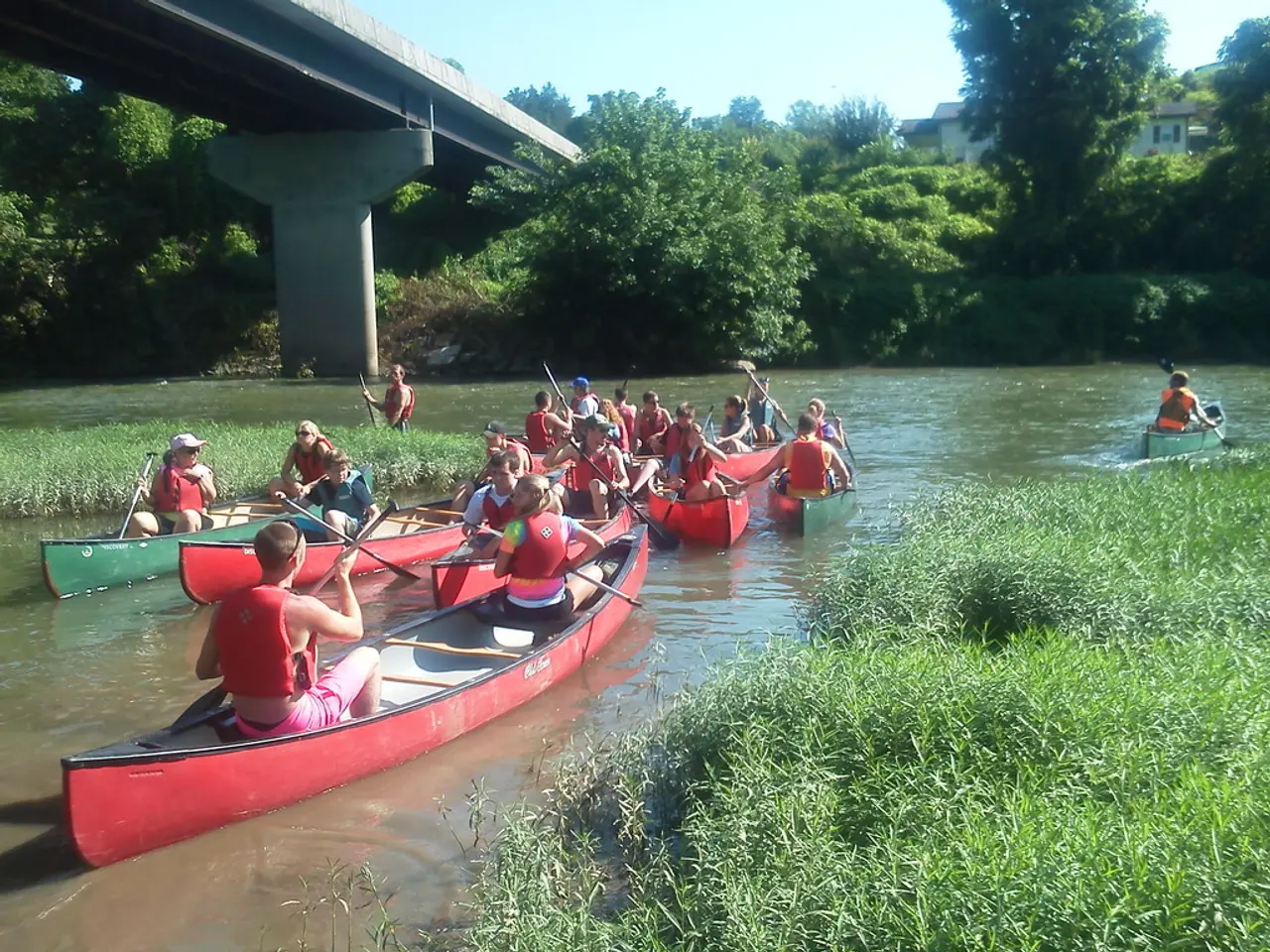Europe's metropolitan city, Paris, submerges into the Seine: watery escapades in urban centers
In recent times, a growing number of Europeans have been taking to the waters of their cities for a refreshing swim. From the bustling canals of Amsterdam to the picturesque rivers of Switzerland, urban swimming has become a popular pastime. However, the regulations governing these activities vary across the continent, with many cities adhering to the EU Bathing Water Directive.
In Berlin, hundreds of citizens have recently demonstrated against the longstanding prohibition of swimming in the Spree, calling for a change that would allow them to enjoy a dip in the city's iconic waterway once more. The ban, which has been in place for about a century, is due to concerns over safety and hygiene. Meanwhile, in Budapest, the Danube presents a different set of challenges, with its dangerous rapids and whirlpools only becoming apparent once one is already in the middle of them.
Elsewhere in Europe, urban swimming regulations are more lenient. In Paris, starting this Saturday, swimming in the Seine will be possible for the first time in over a century. Three open-air pools will be set up for the summer, one near the Eiffel Tower. Amsterdam is another city where swimming in the canals is not recommended due to the heavy boat traffic. However, the IJ, the body of water behind the central station, is a popular swimming spot, with freighter and cruise ships providing enough space.
In Switzerland, swimming is common in urban lakes and rivers such as Lake Zurich, the Limmat, Lake Geneva, the Rhône, the Rhine in Basel, and the Aare in Bern. The waters in these rivers are clean enough to see to the bottom, making them ideal for swimming. However, the current can be strong in some rivers, making the activity only recommended for experienced swimmers.
In London, swimming in the Thames is prohibited and not recommended due to pollution and tides. The same applies to the Tiber in Rome, which is in a dirty and neglected state. Interestingly, in Burgos, Spain, swimming is allowed in the river Arlazón, making it an exception to the general ban on swimming in most Spanish rivers due to high water pollution.
Hungary presents a unique case, as swimming in the Danube is limited due to it being an international waterway for freight and tourist ships. Organized swimming events do take place in the country, such as the Hungarian amateur and professional open water swimming championship.
Beyond these specific examples, the regulation for swimming in urban waters across major European cities relies heavily on the EU Bathing Water Directive’s framework. This involves rigorous water quality testing, environmental management improvements, and localized operational rules to provide safe urban swimming opportunities. Over 22,000 bathing sites across the EU and associated countries are regularly tested for bacteriological safety, with more than 85% achieving ‘excellent’ water quality and 96% at least meeting minimum standards.
In conclusion, urban swimming in Europe is a regulated activity that offers a unique blend of adventure and safety. Whether it's the historic Seine in Paris, the picturesque Spree in Berlin, or the crystal-clear waters of Swiss lakes and rivers, there is a growing number of safe and enjoyable urban swimming spots across the continent.
In line with these trends, the lifestyle of many Europeans is evolving to include outdoor-living activities such as urban swimming. crediting the EU Bathing Water Directive for ensuring water quality, home-and-garden enthusiasts are finding new ways to integrate sports like swimming into their recreational pursuits. For instance, the city of Paris is opening three outdoor swimming pools in the Seine for the first time in over a century, demonstrating the growing appeal of such activities.



